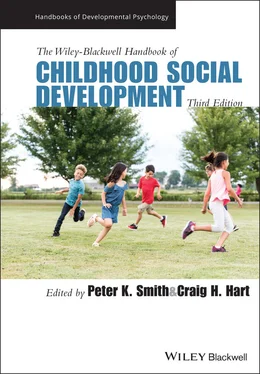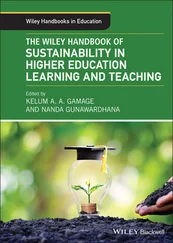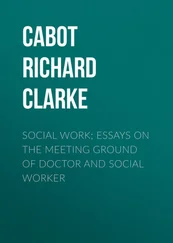83 Tamnes, C. K., Roalf, D. R., Goddings, A. L., & Lebel, C. (2018). Diffusion MRI of white matter microstructure development in childhood and adolescence: Methods, challenges and progress. Developmental Cognitive Neuroscience, 33, 161–175.
84 [cc] Tompson, S., Falk, E. B., Vettel, J. M., & Bassett, D. S. (2018). Network approaches to understand individual differences in brain connectivity: Opportunities for personality neuroscience. Personality Neuroscience, 1. E5.
85 [dd] Tompson, S. H., Kahn, A. E., Falk, E. B., Vettel, J. M., & Bassett, D. S. (2020). Functional brain network architecture supporting the learning of social networks in humans. Neuroimage, 210, 116498.
86 Towbin, A. (1978). Cerebral dysfunction related to perinatal organic damage: clinical–neuropathologic correlations. Journal of Abnormal Psychology, 87(6), 617–635.
87 Turesky, T. K., Vanderauwera, J., & Gaab, N. (2020). Imaging the rapidly developing brain: Current challenges for MRI studies in the first five years of life. Developmental Cognitive Neuroscience, 47, 100893.
88 Tymofiyeva, O., Hess, C. P., Ziv, E., Lee, P. N., Glass, H. C., Ferriero, D. M., Barkovich, A. J., & Xu, D. (2013). A DTI‐based template‐free cortical connectome study of brain maturation. PLoS One, 8(5), e63310.
89 Tymofiyeva, O., Zhou, V. X., Lee, C. M., Xu, D., Hess, C. P., & Yang, T. T. (2020). MRI insights into adolescent neurocircuitry: A vision for the future. Frontiers in Human Neuroscience, 14, 237.
90 [ee] Wilde E. A., Merkley T. L., Lindsey H. M., Bigler E. D., Hunter, J. V., Ewing‐Cobbs, L., Aitken, M. E., MacLeod, M. C., Hanten G., Chu, Z. D., Abildskov T. J., Noble‐Hausslein, L. J., & Levin, H. S. (2021). Developmental alterations in cortical organization and socialization in adolescents who sustained a traumatic brain injury in early childhood. Journal of Neurotrauma, 38(1), 133–143.
91 [ff] Wong, T. Y., Sid, A., Wensing, T., Eickhoff, S. B., Habel, U., Gur, R. C., & Nickl‐Jockschat, T. (2019). Neural networks of aggression: ALE meta‐analyses on trait and elicited aggression. Brain Structure & Function, 224(1), 133–148.
92 Wymbs, N. F., Orr, C., Albaugh, M. D., Althoff, R. R., O’Loughlin, K., Holbrook, H., Garavan, H., Montalvo‐Ortiz, J. L., Mostofsky, S., Hudiak, J., & Kaufman, J. (2020). Social supports moderate the effects of child adversity on neural correlates of threat processing. Child Abuse & Neglect, 102, 104413.
93 Xie, H., Karipidis, II, Howell, A., Schreier, M., Sheau, K. E., Manchanda, M. K., Ayub, R., Glover, G. H., Jung, M., Reiss A. L., & Saggar, M. (2020). Finding the neural correlates of collaboration using a three‐person fMRI hyperscanning paradigm. Proceedings of the National Academy of Sciences USA, 117(37), 23066–23072.
94 Yeates, K. O., Bigler, E. D., Dennis, M., Gerhardt, C. A., Rubin, K. H., Stancin, T., Taylor, H. G., & Vannatta, K. (2007). Social outcomes in childhood brain disorder: A heuristic integration of social neuroscience and developmental psychology. Psychological Bulletin, 133(3), 535–556.
95 [gg] Young, D. A., Neylan, T. C., Chao, L. L., O’Donovan, A., Metzler, T. J., & Inslicht, S. S. (2019). Child abuse interacts with hippocampal and corpus callosum volume on psychophysiological response to startling auditory stimuli in a sample of veterans. Journal of Psychiatric Research, 111, 16–23.
CHAPTER FOUR Evolutionary Perspectives on Social Development
Lance Workman, Sandie Taylor, and Jerome H. Barkow
The academic subfield of developmental psychology can be traced back to the writings of Charles Darwin. Given, however, that Darwin never applied his theory of evolution by natural selection to child development, this might seem a bold and curious claim to make. In fact, while Darwin made no mention of child development in the Origin of Species (1859), 5 years prior to his death in 1877 he published a Biographical Sketch of an Infant in the burgeoning journal Mind . This article provided a detailed description of the early development of his first son William Erasmus and, without mentioning natural selection, suggested that early human social development had parallels with developmental patterns in other social species. In particular, Darwin saw parallels with puppies and kittens in William’s prosocial attempts to engage others in play. In a Biographical Sketch Darwin also stated that the study of child development should be undertaken as a serious scientific enterprise that he hoped others would follow up. Given that by 1877, Darwin was arguably the most eminent figure in the world of science, this call did not go unheeded and numerous other studies of child development were published in quick succession. By the end of the 19th century developmental psychology was regarded as a well‐respected field of scientific endeavor.
In this chapter we provide a broadly chronological account of the relationship between evolutionary theory and considerations of human social development. We first examine the contribution of major theorists from Darwin to modern day evolutionary developmental psychologists. We then consider some current concerns and speculate about future developments.
Darwin’s Disciples–G. Stanley Hall, John Bowlby, and Mary Ainsworth
G. Stanley Hall–getting Darwin wrong
Following Darwin’s clarion call, a number of prominent figures began to make careful studies of child development and to consider these within an evolutionary framework. The first major figure to take this up was also arguably the founder of developmental psychology in North America. Granville Stanley Hall, who in 1878 gained the first PhD in psychology awarded by an America university, was greatly influenced by Darwin’s writings and attempted to bring evolutionary theory to our conceptions of child development. Hall is particularly remembered for developing the concept of adolescence as an important period of transition. He described the difficulties that adolescents face at this time in their lives and popularized the German term “Sturm und Drang” (“Storm and Stress”) to characterize this. Hall considered that, given the right guidance, adolescents naturally gravitate to more altruistic behavior during this period (Hall, 1904), a view which is widely held today (Taylor & Workman, 2018).
Despite his detailed work on adolescence, in many ways Hall’s writings are seen today as a false start for the development of an evolutionary understanding of child development. Hall’s conception of evolution, while incorporating the process of natural selection, also brought Ernst Haeckel’s recapitulation theory into his writings (Barresi & Gilbert, 2020). He believed that ontogeny recapitulates phylogeny, with the young of a species passing through the “evolutionary stages” of its ancestors. To Hall, during their development, children pass through various stages of mental ability, each the equivalent of a “lower species.” This view continued to appear in many writings on child development well into the 20th century. Hall’s conception of child development also accommodated Jean‐Baptiste Lamarck’s theory of evolution through inheritance of acquired features. In particular, he considered that memories formed by adults could be passed on to their children. In summary, while Hall did attempt to integrate the concept of evolution into our understanding of child development, unfortunately his own understanding of natural selection led to a number of misconceptions becoming widespread during the early years of the 20th century; this inadvertently helped to delay the advancement of an evolutionary developmental psychology.
John Bowlby–the importance of the EEA
While several 20th‐century developmentalists, such as Jean Piaget and Lev Vygotsky, brought aspects of evolutionary theory into their writings, arguably the first to truly integrate natural selection into his model of social development was John Bowlby (Workman, 2014). During the middle of the 20th century Bowlby studied the development of the parent–offspring bond in great detail. Having become disillusioned with both psychoanalysis and behaviorism as a means of providing valid explanations of the social development of children, Bowlby turned to the Darwin‐influenced field of ethology. Finding both Freudian psychoanalysts and behaviorists belief in “cupboard love” (broadly, showing affection to those who feed you) theories of attachment to be wanting, Bowlby developed his own theory of attachment based on the recurrent challenges that neonates and infants faced during the evolutionary history of our species. Following Konrad Lorenz’s work on imprinting, Bowlby suggested the adaptive nature of the human mother–infant bond could be traced back to the period when our ancestors left the forests and began to live on the open savannah (Bowlby, 1969; Lorenz, 1935). He argued that, during this period of our species’ history, neonates were evolving a progressively larger brain in order to deal with the challenges of the savannah. Due to limitations of the human pelvic girdle, this increase in cranial size led to the delivery of an increasingly helpless and immature neonate (technically, an altricial birth). It was this state of immaturity that necessitated the formation of a complex and enduring protective bond with the caregiver. It also (according to Bowlby) led to an enduring romantic pair bond between the parents in order to increase survival rates by adding male parental care into the equation (while there are exceptions, the typical mammalian pattern is of maternal investment alone with males acting primarily or solely as “sperm donors”). Nowadays the evolution of our oversize brains is usually attributed to the challenges of increased group size and social complexity rather than to the physical environment (Dunbar, 1993, 2003).
Читать дальше












